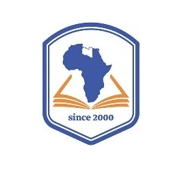Plagiarism Policy
Plagiarism Policy:
The Journal of Scientific Research at the African University for Humanities and Applied Sciences is committed to the highest standards of academic integrity and considers plagiarism to be unethical and completely unacceptable behavior. This policy aims to clarify the concept of plagiarism and the procedures for dealing with it.
This policy aims to preserve the academic journal's standing, protect intellectual property rights, and promote the principles of academic integrity in the research community.
Plagiarism is the act of transferring or using intellectual content (such as texts, ideas, data, or results) created or expressed by another person and presenting it as their own, without explicitly acknowledging or citing the original author. This act constitutes a violation of intellectual property rights and violates the values of academic integrity, whether done intentionally or negligently.
Types of plagiarism include:
• Direct plagiarism: Copying a text or part of it verbatim and directly without citing its source.
• Paraphrasing without documentation: Rephrasing the content or ideas of others without citing the original source.
• Re-plagiarism: Republishing previous works by the same author without explaining the previous publication, or submitting the same work to more than one journal at the same time.
• Partial plagiarism: Using specific portions of another work without citing the source.
• Literary or conceptual plagiarism: Adopting the ideas or theories of others without crediting their original authors. Plagiarism Detection Procedures: The journal is committed to ensuring the originality of all research submitted for publication and applies the following procedures:
• Detection Programs: The journal screens all scientific research using a plagiarism detection program. Image of the program • Acceptable Percentage: Research with a plagiarism percentage exceeding 25% will be rejected, and the similarity percentage must be within the acceptable limits according to scientific publishing ethics. Procedures upon Discovery of Plagiarism: If plagiarism is proven to have occurred before or after publication of a research paper, the journal will take strict measures commensurate with the nature of the violation, including:
• Partial plagiarism: Using specific portions of another work without citing the source.
• Literary or conceptual plagiarism: Adopting the ideas or theories of others without crediting their original authors. Plagiarism Detection Procedures: The journal is committed to ensuring the originality of all research submitted for publication and applies the following procedures:
• Detection Programs: The journal screens all scientific research using a plagiarism detection program. Image of the program • Acceptable Percentage: Research with a plagiarism percentage exceeding 25% will be rejected, and the similarity percentage must be within the acceptable limits according to scientific publishing ethics. Procedures upon Discovery of Plagiarism: If plagiarism is proven to have occurred before or after publication of a research paper, the journal will take strict measures commensurate with the nature of the violation, including:
Before Publication:
1. Rejecting the paper.
2. Notifying the author(s) transparently and providing an opportunity for clarification or correction, if the case is minor and unintentional. Contacting the institution to which the author(s) belong.
After Publication:
1. Removing the article from the journal's publishing platform, along with a statement explaining the reasons for the removal.
2. Issuing an official announcement detailing the violation and explaining the reason for withdrawing the article.
3. Notifying the scientific databases and academic indexes that have archived the article to take appropriate action.
4. Sending an official letter to the academic or research institution affiliated with the author(s) concerned, informing them of the incident.
5. Making a decision to ban the implicated authors from submitting any new work to the journal in the future, either permanently or for a specified period, depending on the nature of the violation.
After Publication:
1. Removing the article from the journal's publishing platform, along with a statement explaining the reasons for the removal.
2. Issuing an official announcement detailing the violation and explaining the reason for withdrawing the article.
3. Notifying the scientific databases and academic indexes that have archived the article to take appropriate action.
4. Sending an official letter to the academic or research institution affiliated with the author(s) concerned, informing them of the incident.
5. Making a decision to ban the implicated authors from submitting any new work to the journal in the future, either permanently or for a specified period, depending on the nature of the violation.






